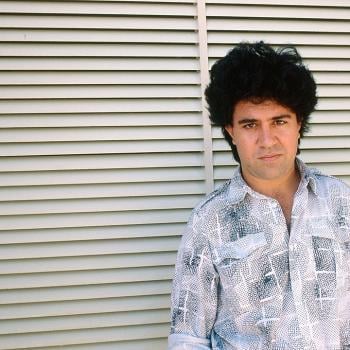Lectionary Reflections
Ascension Sunday
Luke 24:44-53
June 5, 2011
Have you ever seen a triptych (pronounced trip-tik)? It's a work of art divided into three sections, or three carved panels that are hinged together and can be folded up and made portable for easy transport. The middle panel is typically the largest, and it is flanked by two smaller panels with related themes. Taken together the three panels tell one story. The name triptych originates from the Greek tri (three) plus ptche (fold). Triptychs come in a variety of sizes from small paintings to large altarpieces. Some stained glass windows imitate the trifold form. Our gospel text for Ascension Sunday is a triptych. I like the metaphor because it conveys that the three parts of our text are related and that the text can be folded up and made portable for easy transport wherever we go.
Like a medieval triptych, this work of art needs all three panels to be complete. The first we'll call "Recognition," because in it the disciples recognize the Risen Jesus. The second we'll call "Commissioning," because in it the Risen Lord commissions the disciples. The third we'll label "Departure," because Jesus departs to be with God.
Recognition
How are your recognition skills? New Testament people could have used some voice and facial recognition software. It would have been good if they had used Amazon prime 2-day free shipping so they would have received it before Easter Day, because three times that day, various people mistake Jesus for someone else. Mary, in John's gospel, as Jesus stands behind her, mistakes him for a gardener (Jn. 20:15). The two disciples on the road to Emmaus later that day, as Jesus joins them on the road, mistake him for a vagabond who hasn't heard about the local tragedy (Lk. 24:18). And now, the disciples, when Jesus stands among them, are "startled and terrified" and mistake him for a ghost (Lk. 24:37). Gardener, vagabond, ghost—none of these even comes close.
Mary recognizes Jesus in the "gardener" when he calls her by name (Jn. 20:16).
The disciples on the road to Emmaus recognize Jesus in the "vagabond" when he breaks bread and blesses it (Lk. 24:30).
The disciples in the scene in Luke 24:36-49 recognize Jesus in the "ghost" when he shows his scars and eats a piece of fish. Real scars that signal, "Yes, I really died." Real food that signals, "Yes, I am really alive again."
The disciples experience an interesting mix of emotions. They were, "in their joy disbelieving . . . still wondering" (24:41). Jesus opens their minds to understand the scriptures that connect Messiah and suffering and death.
The result is that when they recognize him they are recognizing that he is, not a gardener, vagabond, or ghost, but The Son of Man, the suffering servant, and the Messiah.
As Son of Man he is able to identify with our human struggles and be a sort of representative human. At the same time, he wins a victory over forces that stand in the way of our obedience to God as individuals and communities. Instead of using the term "Messiah," Jesus preferred to refer to himself as the "Son of Man." By Jesus' time the title "Son of Man" had collected several connotations. They included representative human figure (Ezekiel), holy designated ruler (Daniel), and future, supernatural judging, saving figure (The Similitudes of Enoch, 37-61 and 2 Esdras 13).
As Suffering Servant his humiliation and sufferings contribute to our being made right with God. Jesus connects the Son of Man figure with the suffering servant figure of the prophet Isaiah (Is. 53:10-12; Mk. 10:45) whose suffering would be redemptive for Israel. Jesus repeatedly asserts that the Son of Man must suffer, die, and be resurrected (Lk. 18:31, 19:10). (See also Mt. 20:18, 28, 26:45; Mk. 8:31, 10:33, 14:21; Lk. 18:31, 19:10.) In identifying the Son of Man with the Suffering Servant, Jesus combines the motifs of humiliation, suffering, and death with that of the future exaltation of the Son of Man.
As Messiah, Jesus brings in a reign of God. It is a reign that, contrary to popular expectations, is not reducible to political power and nationalistic ambitions. It is a reign that results in a community of righteousness and peace. The title "Messiah" is a Hebrew word meaning "anointed" (Greek=Christos; English=Christ). The term was used in the Old Testament to refer to those anointed with oil for a special function such as that of the high priest (Lev. 4:3,5,16) or the king (2 Sam. 1:14,16). During the late Old Testament period (400-300 B.C.E.) the title "Messiah" came to denote the ideal king anointed by God, empowered by God's spirit to deliver his people and establish his kingdom in righteousness (Dan. 9:26-27). Jesus seems to have been reluctant to apply the title to himself due to its political, nationalistic overtones. During his earthly ministry, when others directly confronted him with his identity as Messiah, he did not deny it. (McKenzie, Parables for Today, 14-15)





